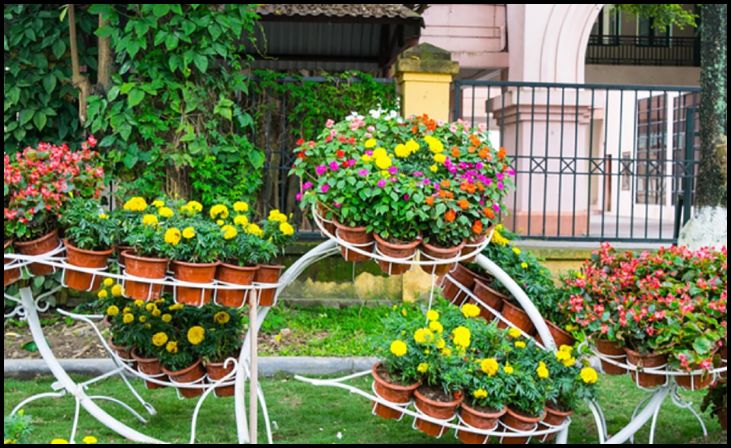In the midst of urban hustle and bustle, a small balcony can serve as a tranquil retreat and a green sanctuary. Whether you’re a city dweller craving a touch of nature or simply looking to enhance your living space, balcony gardening offers a perfect solution. This guide explores seven practical tips to help you maximize your balcony’s potential for gardening, regardless of its size or layout. From choosing the right plants to optimizing space and maintaining sustainability, you’ll discover how to create a thriving garden in even the smallest urban spaces. Let’s delve into the world of small balcony gardening and unlock the secrets to cultivating a lush oasis right outside your door.
1. Assess Your Space and Climate

Before diving into balcony gardening, assess your space’s unique conditions. Consider factors such as sunlight exposure, wind patterns, and available space. Understanding these variables will help you select plants that thrive in your specific environment. For example, if your balcony receives limited sunlight, opt for shade-loving plants like ferns, begonias, or peace lilies. Conversely, if your space enjoys ample sunlight, herbs, succulents, and vegetables such as tomatoes or peppers can flourish.
2. Choose the Right Containers
Selecting the appropriate containers is crucial for balcony gardening success. Lightweight, weather-resistant materials like plastic or fiberglass are ideal for easy maneuverability and durability. Ensure containers have drainage holes to prevent waterlogging, which can damage plant roots. Vertical gardens, railing planters, and hanging baskets are excellent space-saving options for maximizing vertical space while adding visual interest.
3. Optimize Space with Vertical Gardening
Maximize your balcony’s vertical space by incorporating vertical gardening techniques. Install trellises or vertical planters to grow climbing plants such as vines, peas, or cucumbers. This not only saves floor space but also creates a lush green backdrop. Utilize wall-mounted shelves or racks to display smaller pots or create a herb garden. Vertical gardening not only enhances aesthetics but also boosts air circulation around plants, promoting healthier growth.
4. Select Suitable Plants

Choose plants that are well-suited to balcony conditions and your gardening goals. Herbs like basil, mint, and parsley thrive in containers and provide fresh flavors for culinary adventures. Dwarf varieties of vegetables such as cherry tomatoes or compact peppers are perfect for small spaces and yield a bountiful harvest. Consider ornamental plants like marigolds or petunias to add color and attract pollinators. Research the mature size of plants to ensure they won’t outgrow your balcony space.
5. Provide Proper Care and Maintenance
Balcony plants require regular care to thrive. Water plants as needed, ensuring soil moisture without overwatering. Consider using self-watering containers or drip irrigation systems for efficient watering. Fertilize plants periodically with a balanced fertilizer to replenish nutrients depleted from container gardening. Prune regularly to maintain plant shape and encourage new growth. Monitor for pests and diseases, addressing issues promptly to prevent spread. With proper care, balcony gardens can flourish year-round, providing a constant source of beauty and enjoyment.
6. Create a Cozy Ambiance
Transform your balcony into a cozy oasis by adding decorative elements and comfortable seating. Incorporate weather-resistant furniture and cushions to create a relaxing outdoor retreat. Enhance ambiance with soft lighting such as string lights or lanterns for evening enjoyment. Arrange plants strategically to create privacy or shade, ensuring a peaceful sanctuary amidst urban surroundings. Personalize your balcony with decorative pots, garden art, or wind chimes to reflect your style and create a welcoming atmosphere.
7. Embrace Sustainability Practices

Practice sustainability by incorporating eco-friendly practices into your balcony garden. Use organic potting mixes and natural fertilizers to promote soil health and minimize environmental impact. Consider composting kitchen scraps to create nutrient-rich soil amendments. Use rainwater or collected water from dehumidifiers for irrigation to conserve water. Choose native plants or drought-tolerant species that require less water and maintenance. By adopting sustainable gardening practices, you contribute to a healthier environment while enjoying the benefits of a thriving balcony garden.
Conclusion
In conclusion, small balcony gardening is a rewarding endeavor that transforms limited urban spaces into vibrant green sanctuaries. By following the tips outlined in this guide—assessing your space, choosing the right containers and plants, optimizing vertical space, providing proper care, creating ambiance, and embracing sustainability—you can create a flourishing garden oasis outside your door. Whether you’re cultivating herbs for cooking, growing vegetables for fresh produce, or simply beautifying your balcony with ornamental plants, gardening in small spaces offers endless possibilities. Take inspiration from nature and your surroundings to tailor your balcony garden to your preferences and enjoy the tranquility of a green retreat amidst the urban jungle.




